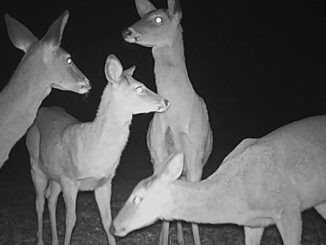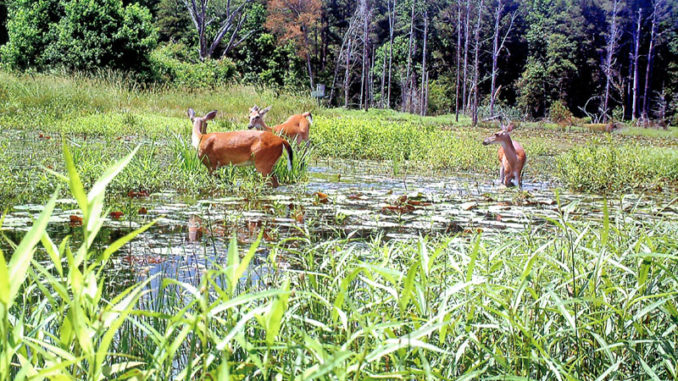
Everyone knows that when the water is rising in Louisiana, it’s time to head for high ground.
It is interesting that white-tailed deer have learned that when the hunting pressure increases, it is time to head to the water and the ridges where hunters do not want to go.
For hundreds of years, deer in Louisiana have lived with rising water. It seems they have this sixth sense that tells them to move out when the water begins to rise, and to move back to their habitat when it begins to fall.
After the great flood of 1927, the landscape changed for whitetails, with levees, channelization and the like as humans tried to control and manage the flooding. The annual cycles of spring flooding with the associated flooding no doubt helped develop the late breeding and fawning seasons of deer in these areas.
Swimming across the Mississippi River does not seem to be a problem for deer. Biologists took advantage of their swimming talent during the restocking effort in the 1960s. A good deer herd at the mouth of the Mississippi River on the Delta Refuge provided the state with a source of deer for restocking. Helicopters were used to chase the deer out of the marsh and into the water, where biologists in airboats kept the deer swimming until they tired out. Then, they would catch and hog-tie them and take them ashore to crates that were used to transport them. Many parishes received deer from the efforts in this area.
Stress
A sudden rise in water from a storm such as a hurricane can trap deer on ridges. While deer can tolerate high water, animals can become stressed over time, particularly if the flood persists. They quickly eat the available browse, becoming further stressed.
Deer that live in the batture habitat inside the levees will leave during times of flooding and quite often begin to overbrowse the farmers’ crops outside the levee system, creating problems for farmers.
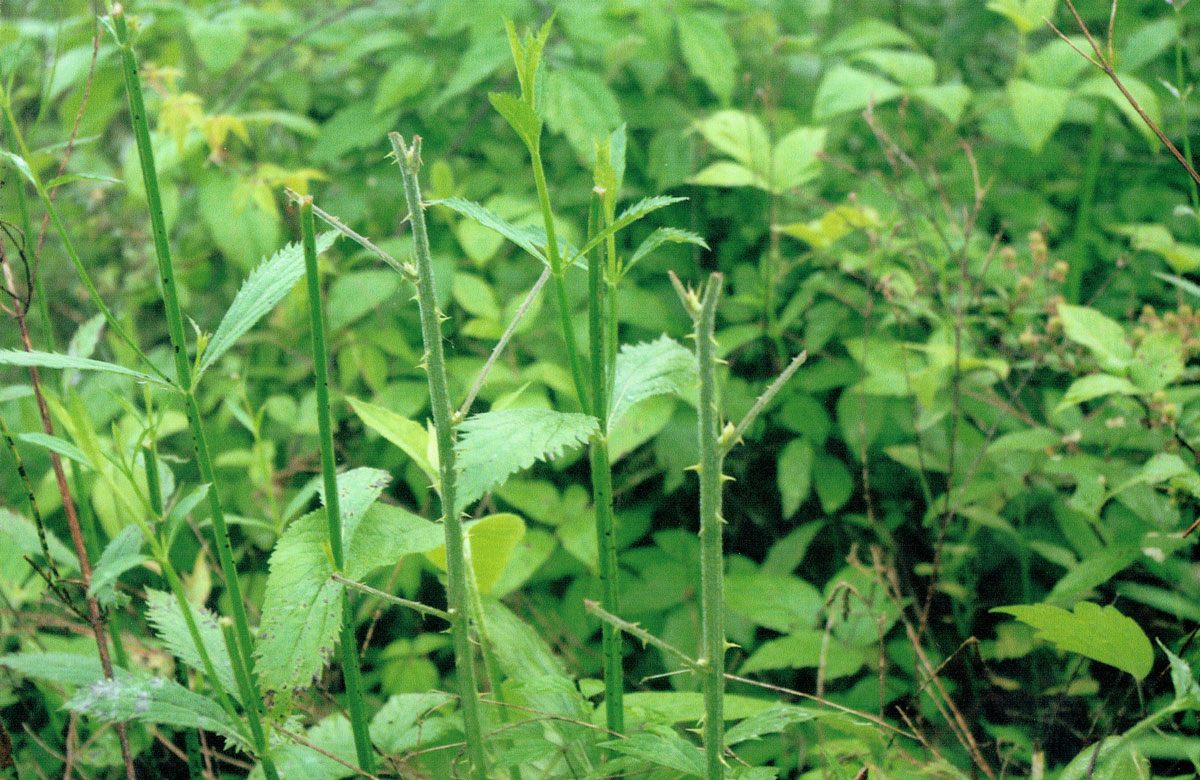
Several factors can be considered when evaluating the impact of flooding on a herd. The timing is important. Did the flooding occur in the spring, when does are pregnant and bucks are growing antlers? Did it occur during the late summer, when fawns are being born in these flooding areas? The duration of the flooding is also important. Did it last a few weeks, a few months or several months? Flooding of short duration generally does not create issues. Flooding of the magnitude of 2019 is the horse of a different color and causes concern for deer managers. Not only does it impact the herd, but it impacts the habitat.
The concern over the impact of this year’s record flooding was enough that LDWF shortened the number of either-sex days for Area 5 in an effort to reduce the harvest. Intense flooding can reduce deer productivity and deer quality, and it can create habitat issues.
Flooding and deer productivity
Research has always documented that healthy does will produce more fawns than does with low body weights and in poor health. Flooding events create problems for the habitat, which impacts deer nutrition.
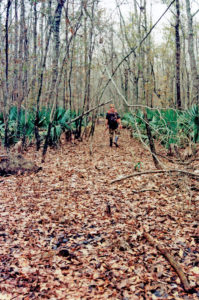
The unprecedented flooding this year was an event that could impact deer productivity. In fact, the reduction in either-sex days was taken in anticipation of poor fawn production. Similar flooding events in the past impacted fawn production based upon the harvest data that was collected after the floods. Lactation rates dramatically declined, an indication that does lost their fawns, either from stress or due to the water being high when fawns were born. This scenario was again present this year. High water was prevalent the entire time that does were pregnant and extended into the fawning season.
Fawns
A poor fawning season means the loss of the 6-month age class during the season. This carries over year after year and means fewer 1½-year-old deer in 2020, fewer, 2½-year-old deer in 2021, fewer 3½-year-old deer in 2022 and so on. Clubs and landowners would see fewer bucks in these age classes during future seasons; their total deer harvest would be less. To offset this loss, biologists have recommended that fewer does be harvested this season, which would allow for a higher-than-normal doe population to be producing more fawns in 2020. If this happens, the decline in the buck harvest of a club would be less in these future seasons as these 6-month-old bucks born in 2020 grow older.
LDWF is recommending that hunters reduce their doe harvest in Area 5, which should offset low deer harvests in future seasons. This management effort is similar to the program in Area 4 where hunters are restricted to a three-deer limit.
Flooding and buck quality
This year’s extended flooding impacted the habitat to the point that there was a loss of growing-season browse in affected areas. When flood waters finally receded, the spring and summer growing season was over, reducing browse availability for fall and winter. Clubs and landowners can offset this loss with fall plantings. A mild winter will also help the browse to recover.
Deer that were dispersed from their home range due to flooding may have moved to areas where browse was limited. Increased deer numbers in these areas means increased browsing, and the nutrition needed to grow the desirable antlers that hunters prefer may have been lacking. Because of this, hunters may see a decline in the antler quality of bucks this year. Hunters may want to reduce their harvest in the younger age-classes of bucks and allow them another year to grow older. Since these 2019 flood regions are in the areas where big bucks grow, it will be interesting to see how many trophy class bucks are harvested this season.
Pedicle bones
One issue with bucks that has been observed on several areas where severe flooding is a problem is the occurrence of bucks that do not produce any bony antlers. I have observed this on Old River Island and in the Morganza Floodway. For whatever reason, during the early stages of pregnancy, the male embryos of some does being stressed by flooding do not develop pedicle bones. Antlers grow on these pedicle bones; consequently, if the pedicle bones do not develop, the buck will never have antlers. I have the skull of one of these old adult bucks that was over 200 pounds in body weight. This phenomenon seems to be confined to those areas where flooding occurs, because I am not aware of this happening in the piney woods, even on lands with high deer numbers and poor habitat conditions.
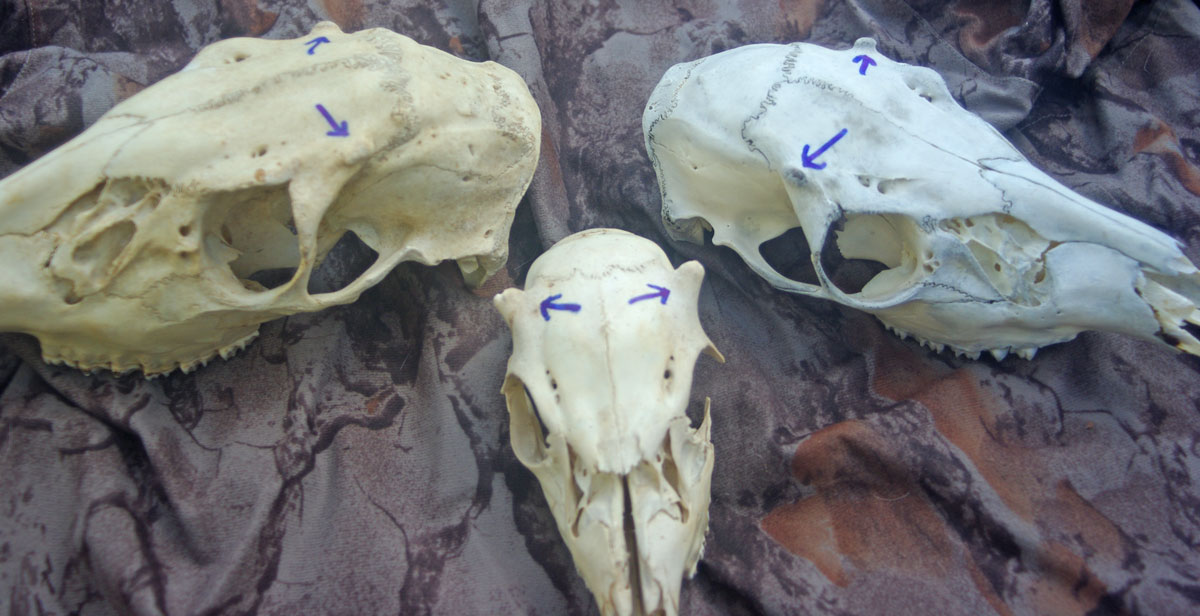
Habitat problems
Once the floodwaters recede, the habitat will recover — and very quickly. This year, with the flooding being so late, the browse that is normally available to deer was underwater, and many species probably died back. However, the rootstock will remain viable, and once the water recedes, it will start growing again. Ground cover will be reduced this fall and winter but will recover next spring, provided the forest canopy allows sunlight to reach the forest floor.
It may be wise to consider doing some logging next year on sites with a closed canopy to allow the habitat a better chance to recover. Extended flooding can create issues for some hardwood trees, and hunters may see trees that have been stressed. This would be another reason to consider doing some logging and remove these stressed trees before they die.
Flooding is nothing new to Bayou State deer herds, but when flooding is severe like it was this past season, it pays to move forward with caution: limiting the harvest, monitoring the physical condition of harvested deer, and doing the management work to ensure quality habitat.

